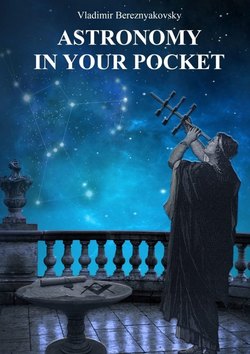Читать книгу Astronomy in your pocket - Vladimir Vladimirovich Bereznyakovsky - Страница 11
I. THE GREAT EXPLORERS
GALILEO GALILEI
ОглавлениеGalileo was born in 1564 in Pisa and belonged to a ruined Florentine family. From an early age, the boy was attracted to art; all his life he was interested in music and drawing – he mastered them perfectly. In 1581, 17-year-old Galileo, at the insistence of his father, entered the University of Pisa to study medicine, but was passionately interested in geometry, and in 1592, Galileo received a place at the prestigious and rich University of Padua, where he taught astronomy, mechanics and mathematics. After learning about the invention of the telescope in Holland, Galileo decided to build his own telescope. In 1609. he assembled the first telescope and pointed it at the sky. Soon he was able to build a telescope that gives a magnification of 32 times. It is also important to note that the term “telescope” was introduced into science by Galileo. Using the telescope, which became the main instrument of all astronomers, Galileo Galilei saw the surface of the moon and discovered mountains and craters on the moon, and the milky Way broke up into separate clusters of stars. But even more surprisingly, Galileo was able to see as many as four moons of Jupiter. In Florence, Galileo continued his scientific research, discovering the phases of Venus, spots on the Sun, and then the rotation of the Sun around its axis.
Galileo was a very versatile man, who invented hydraulic scales, studied probability theory, created a prototype microscope with which he studied insects; also worked on the theory of color and magnetism, the resistance of materials, optics and acoustics. He was the first to experimentally measure the density of air. Galileo was a gifted writer and philosopher, and he was certainly the founder of both experimental and theoretical physics, and even Einstein called Galileo “the father of modern science”. He can be considered one of the founders of mechanism, because it is the analysis of mechanical movement that underlies his work. This scientific approach considers the Universe as a large mechanism, and complex natural processes as combinations of the simplest causes, the main of which is mechanical movement.
As you know, Galileo studied inertia and free fall, and in his last book formulated the laws of fall: “The speed increases in proportion to time, and the path increases in proportion to the square of time.” This contradicted the famous statements of Aristotle that the speed of falling is greater the greater the weight of the body. However, with the Catholic Church, things did not go so smoothly for Galileo. The fact is that the absolute majority of his works contained a variety of different statements and hypotheses that completely contradicted Aristotle, namely, the works of Aristotle built the medieval worldview. Seeing the obvious refutations of the geocentric system of the world and its fallacy, he decides to fight for the truth with the Catholic Church. His books violated the prohibition on promoting the “Pythagorean” doctrine, and Galileo was faced with a choice: either he would repent and renounce his “errors”, or he would suffer the fate of Giordano Bruno. Galileo confirmed that he agreed to recite the required recantation, and then was sentenced to prison. He spent the rest of his life under house arrest and the constant supervision of inquisitors. Galileo Galilei died on January 8, 1642, at the age of 78, in his bed. Pope Urban forbade the burial of Galileo in the family crypt in Florence. The greatest scientist of the middle Ages was buried without honors, and the head of the Catholic Church also did not allow to erect a monument. Officially, the Vatican rehabilitated Galileo Galilei only in 1992.
Among the most famous students of Galileo are Torricelli, who became a physicist and inventor, Castelli, the Creator of hydrometry, and Borelli, the founder of biomechanics. Craters, satellites, asteroids, and a NASA space probe were named in memory of the great scientist of the middle Ages.
